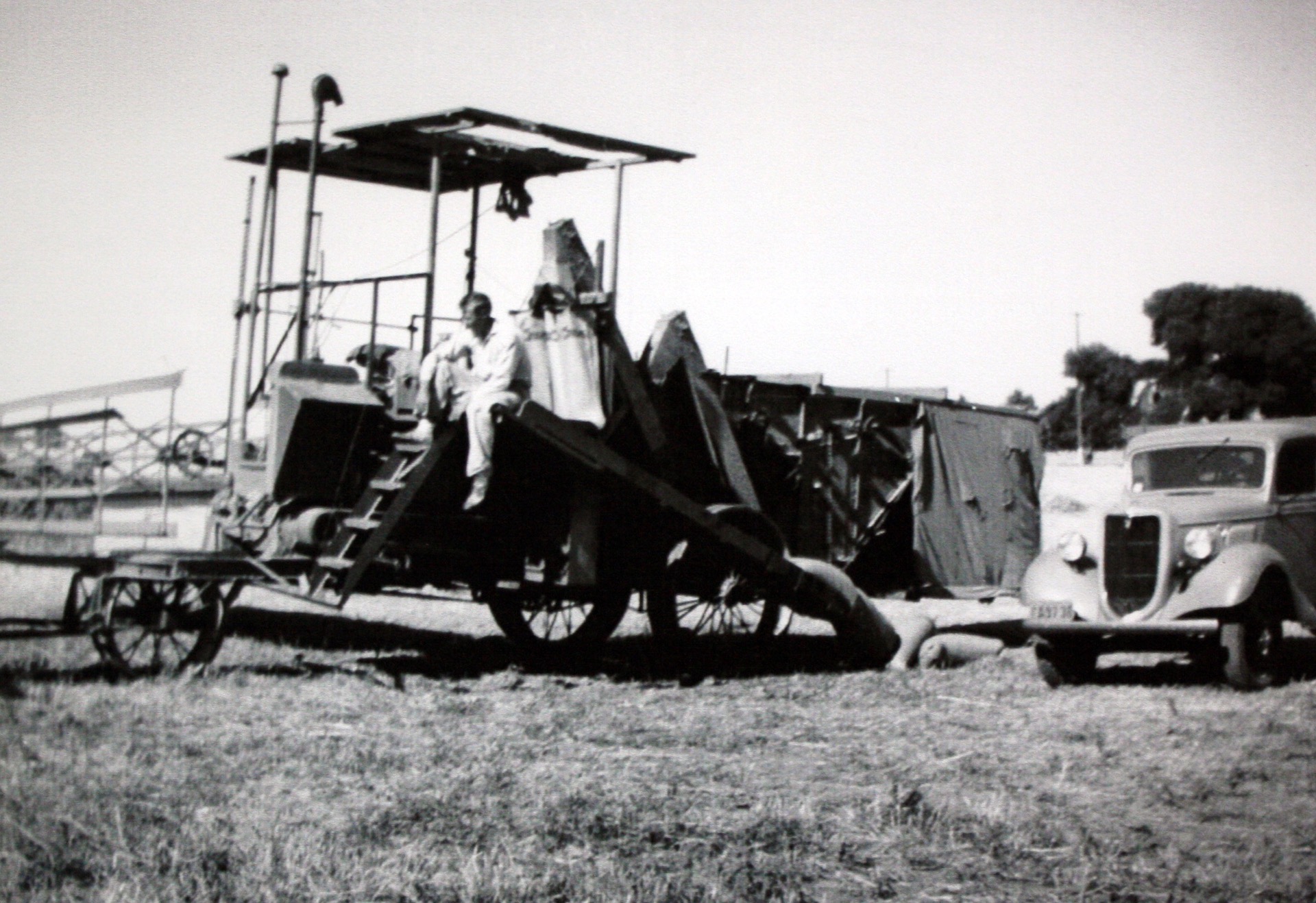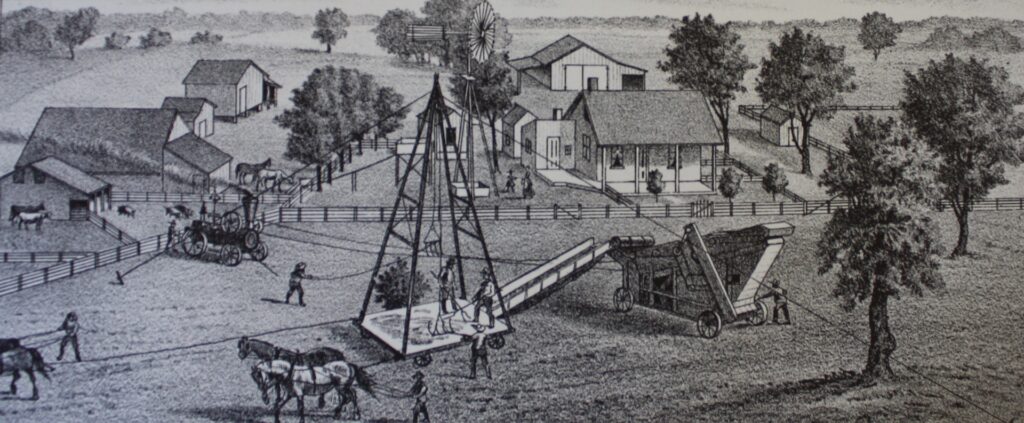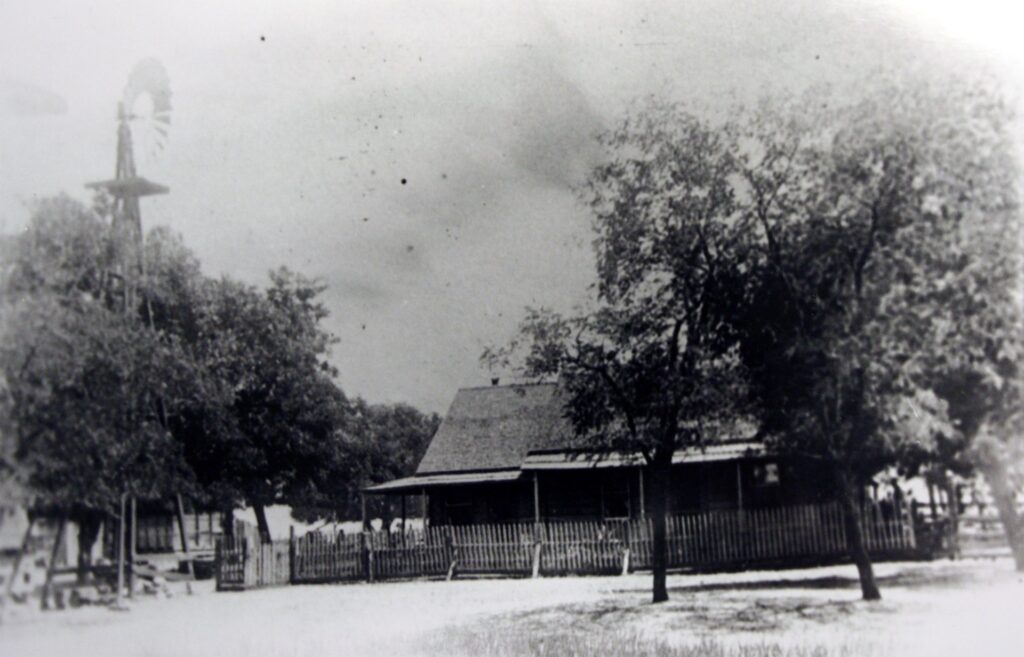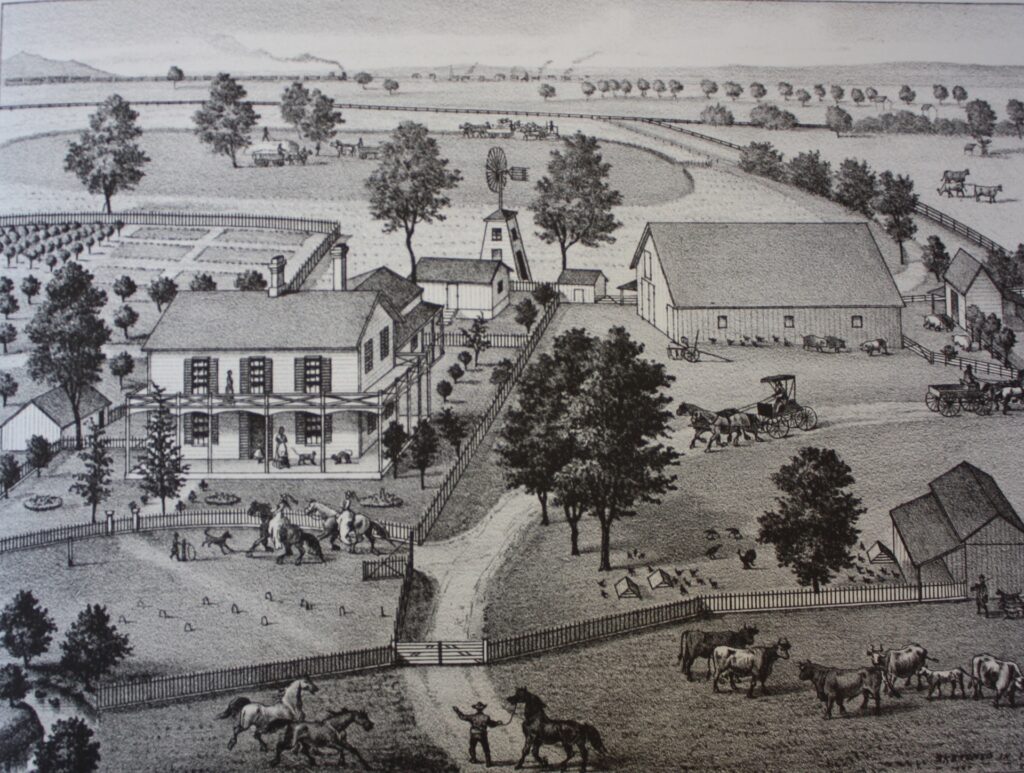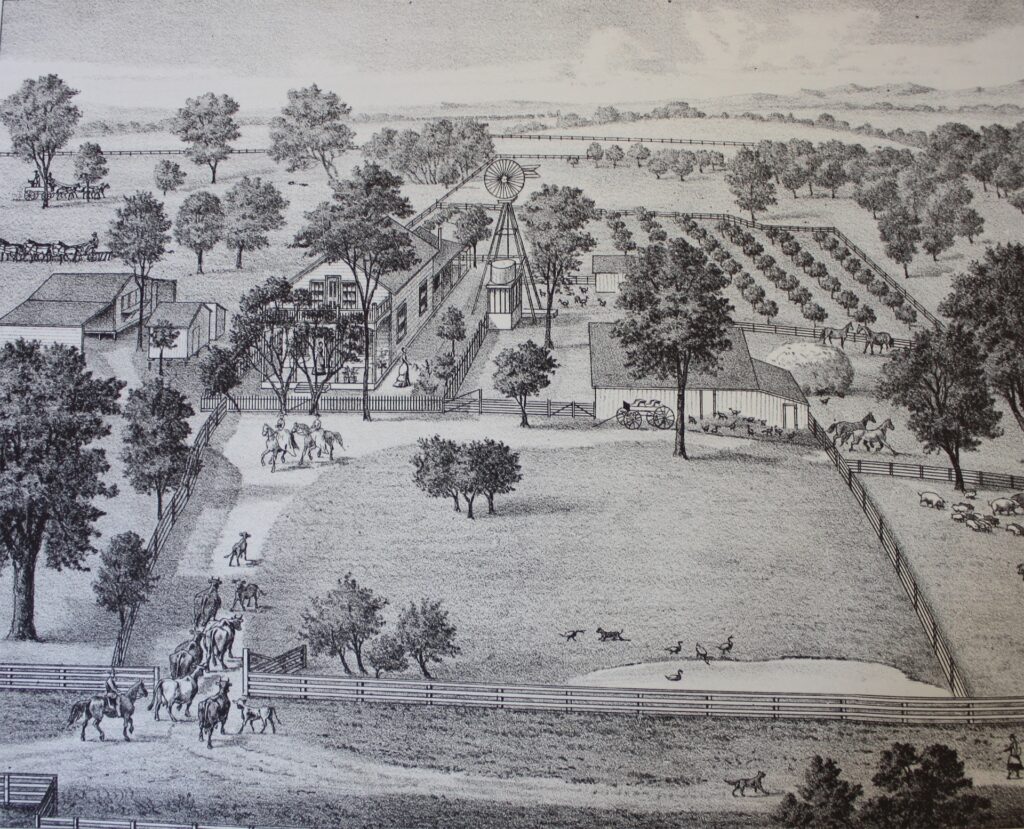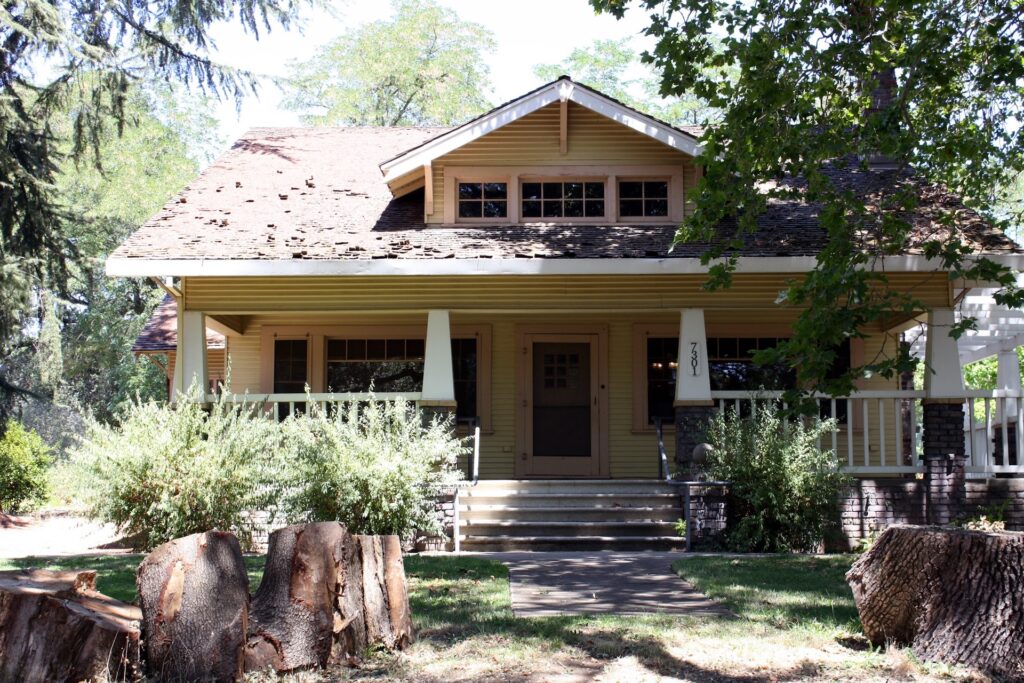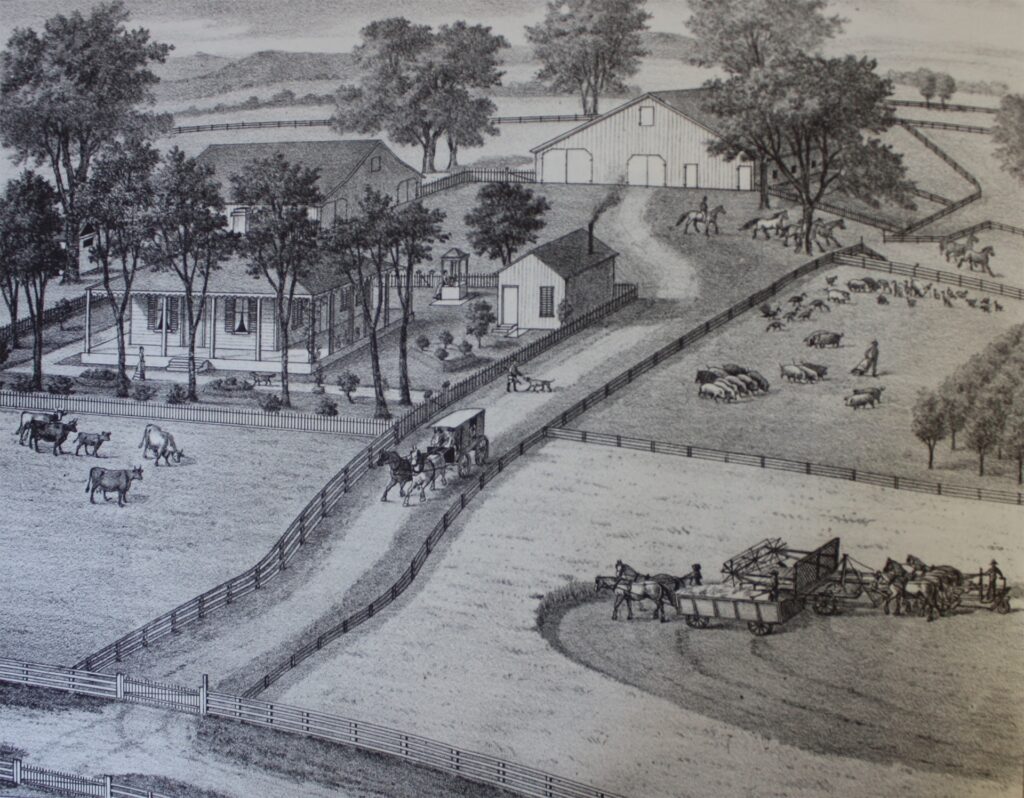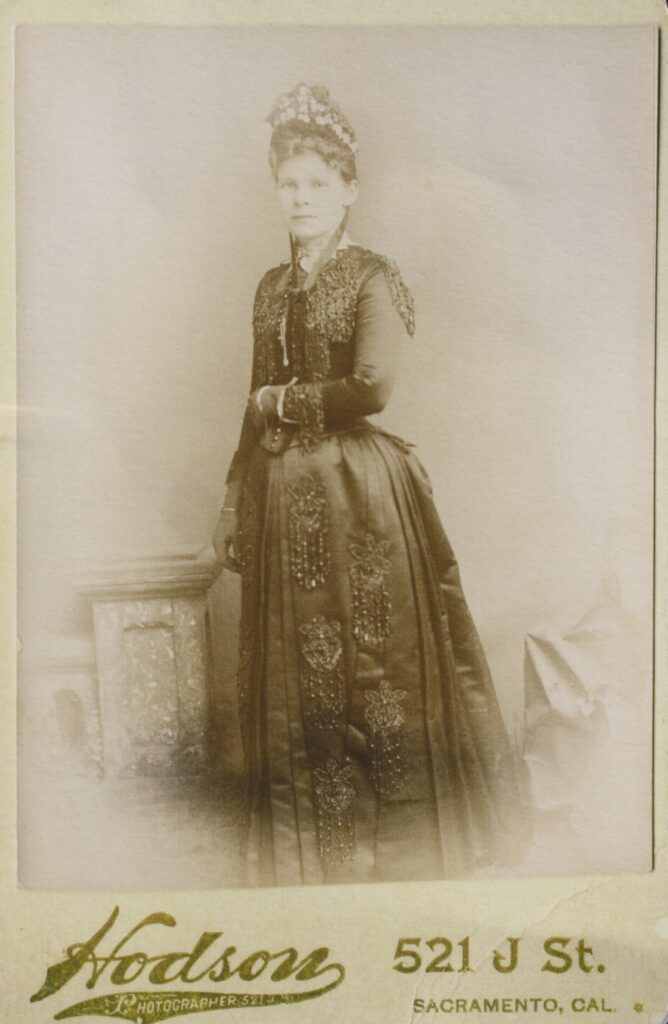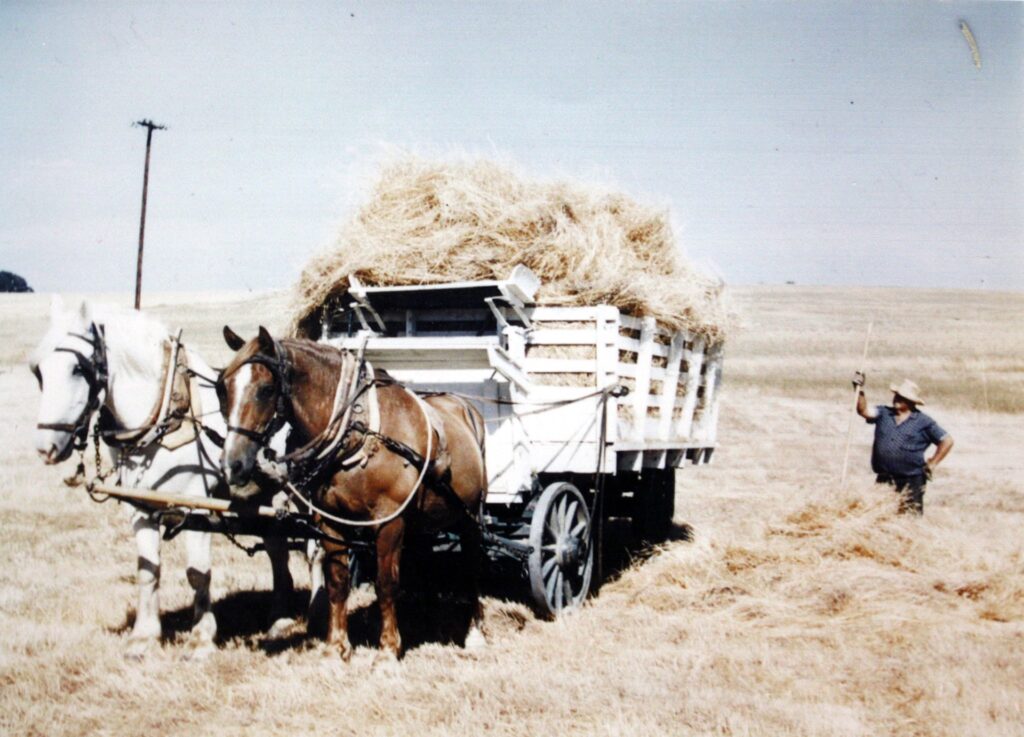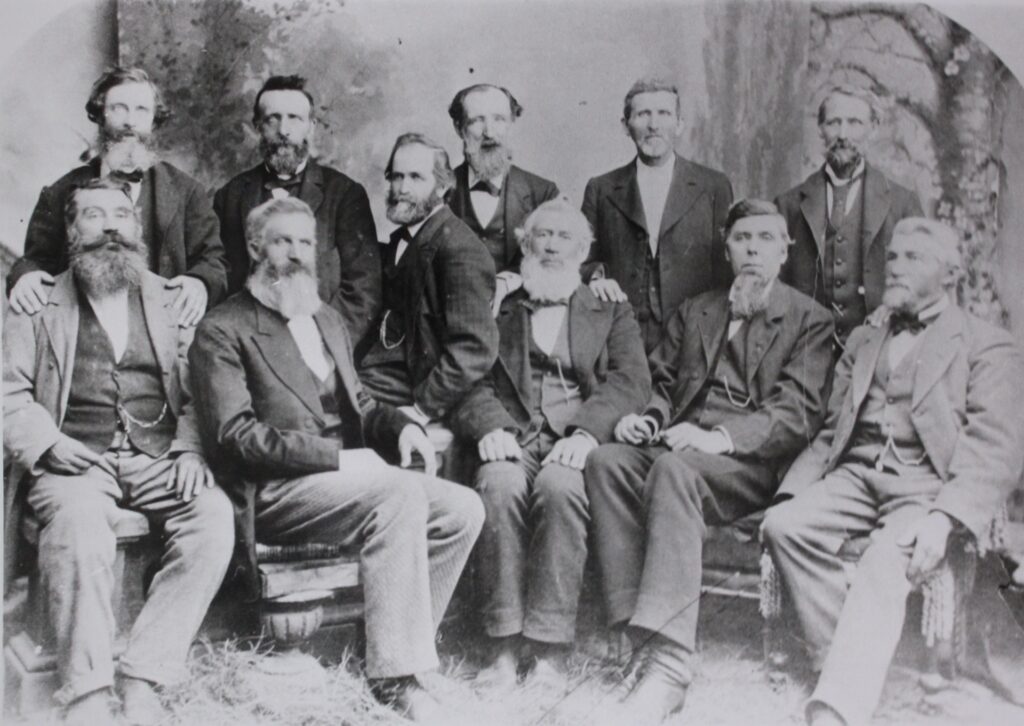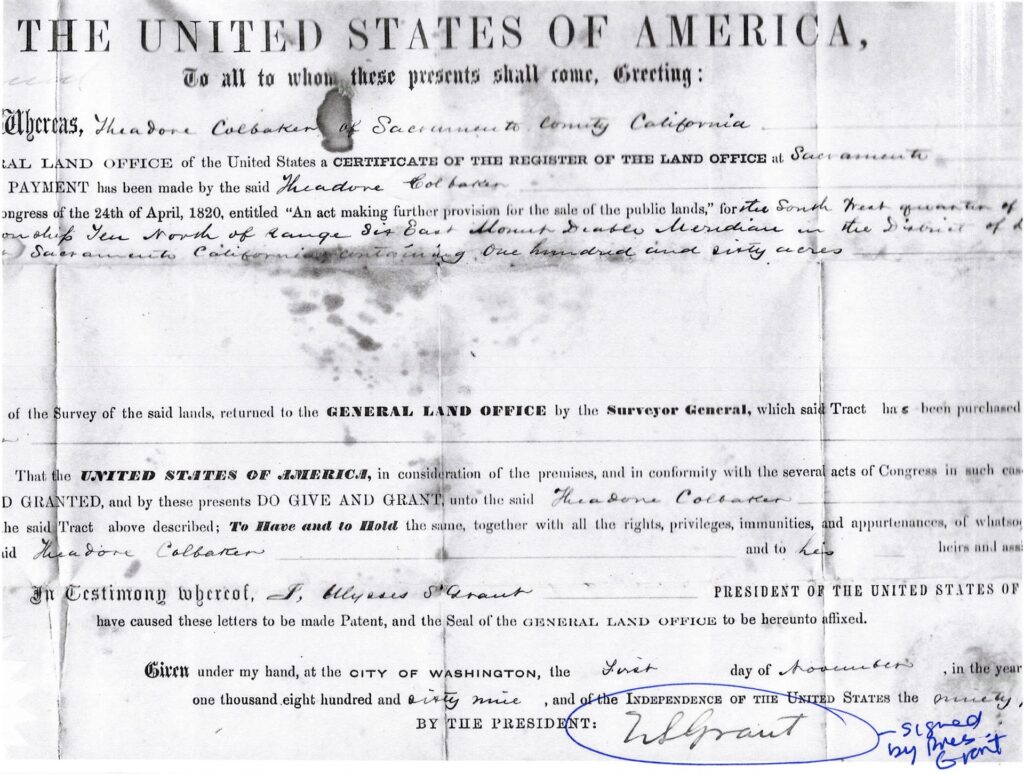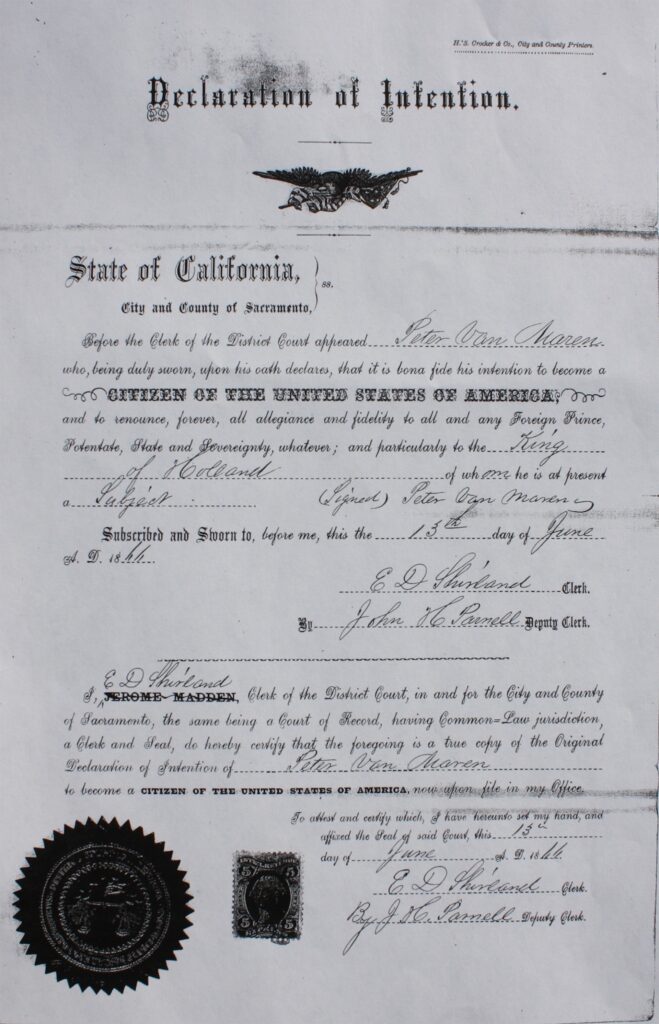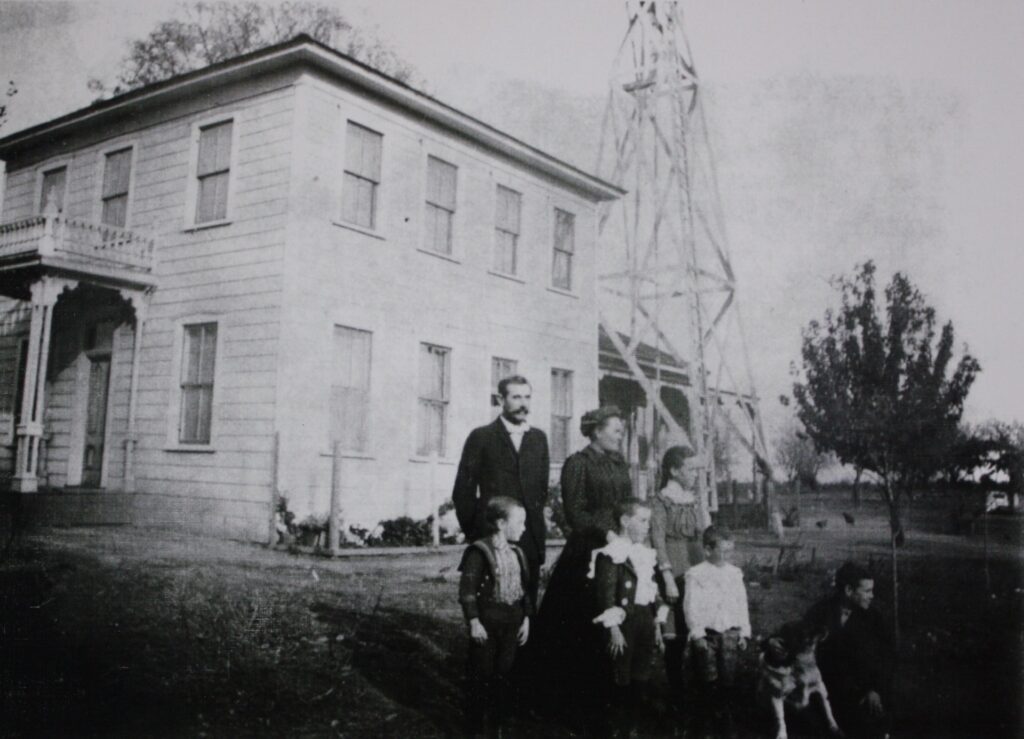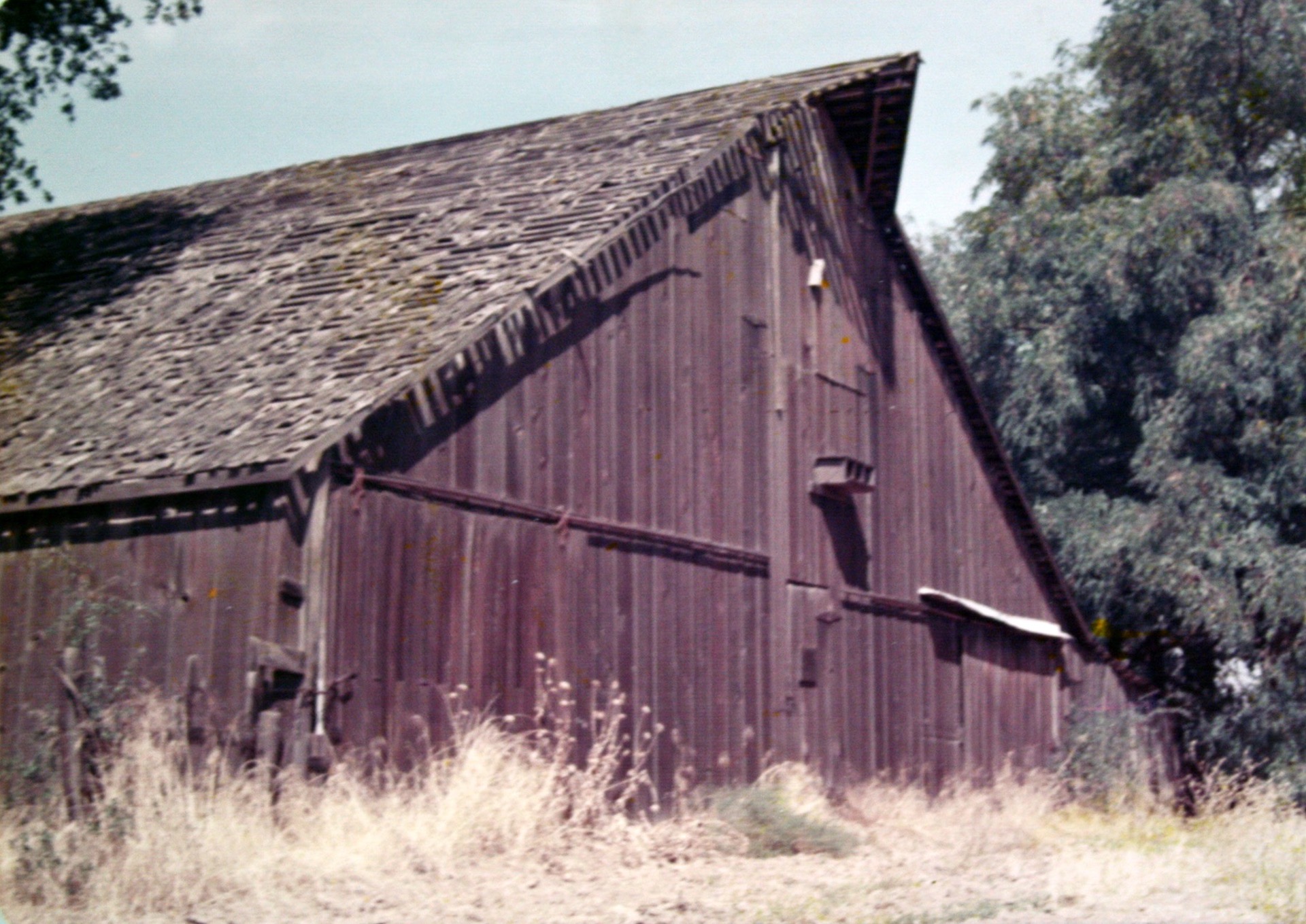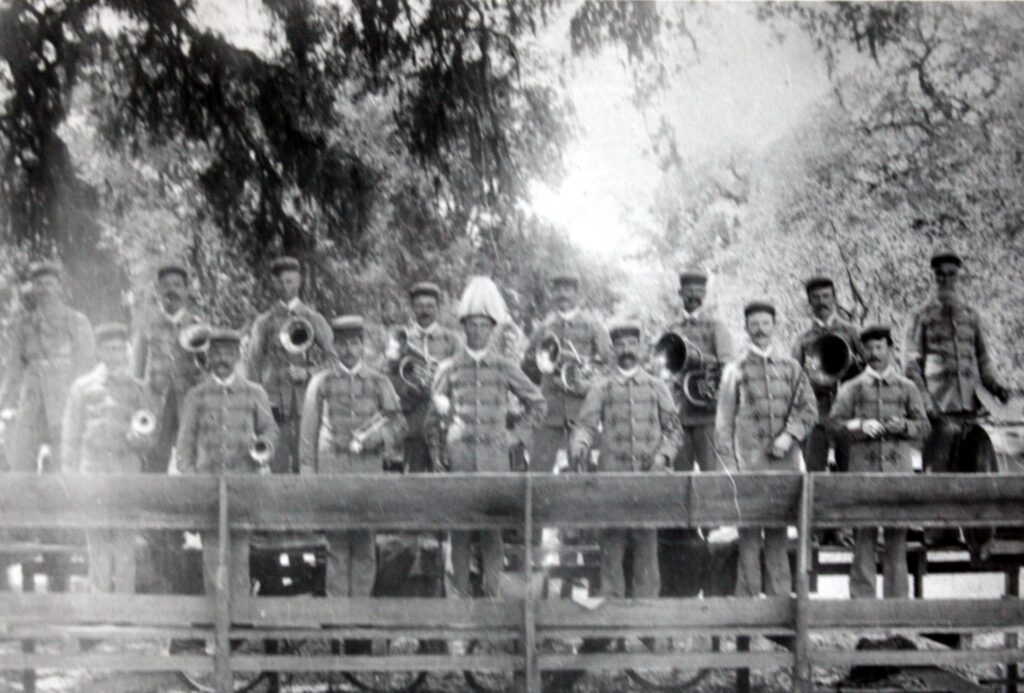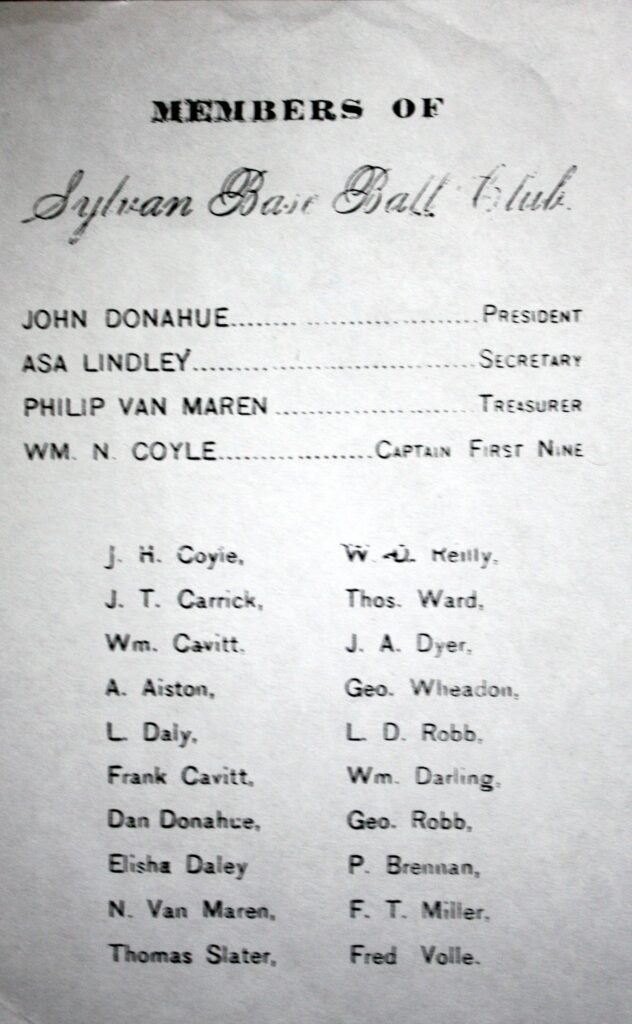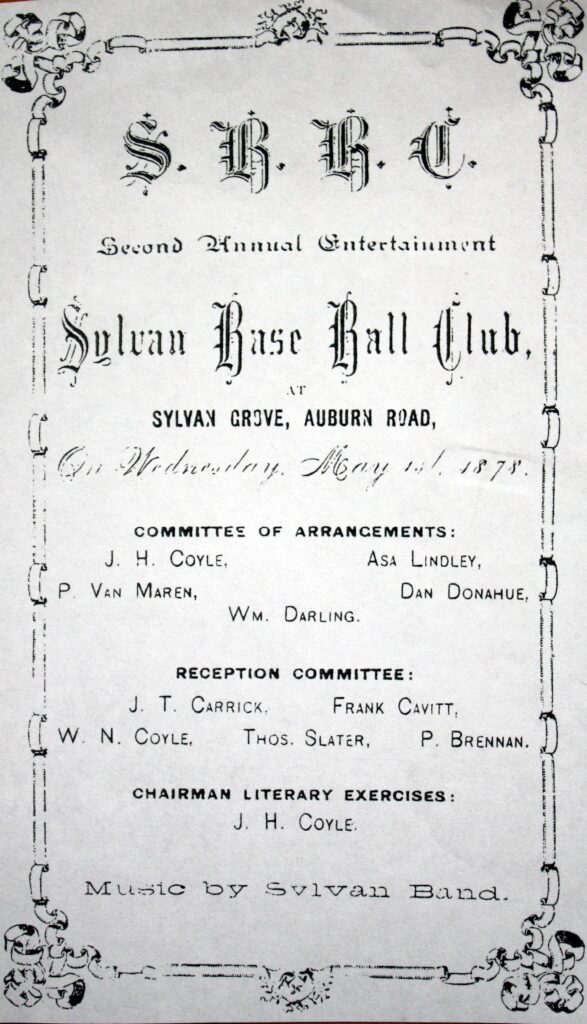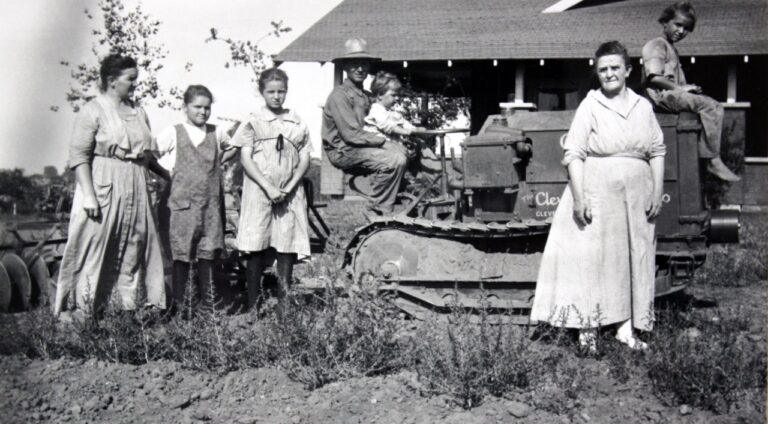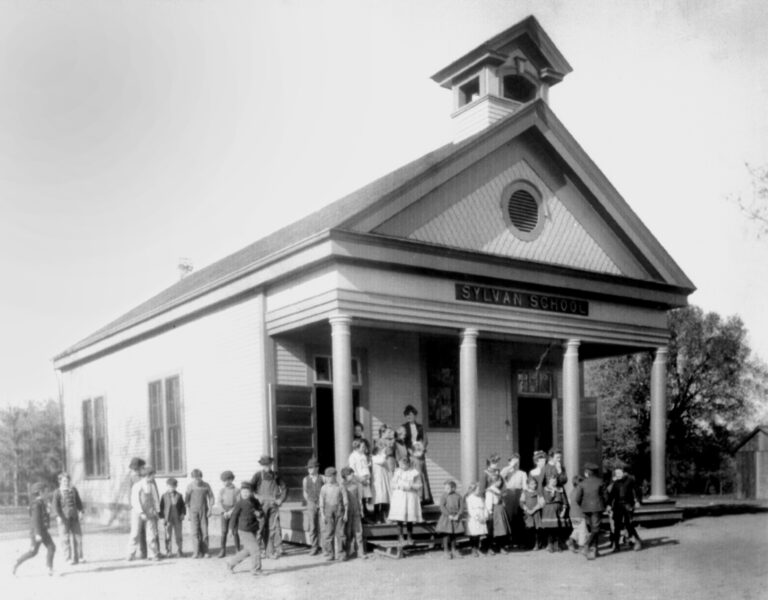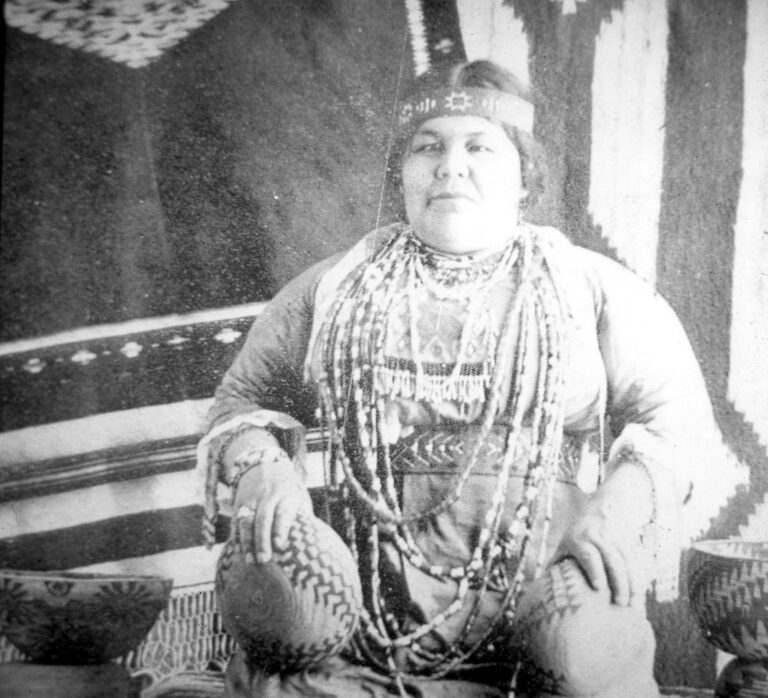While some early settlers catered to teamsters along the Auburn Road, others came to Citrus Heights with an eye on farming. The US government divided the land into 640 acre parcels known as, sections. Settlers typically purchased a quarter section parcel of 160 acres to start a farm. The purchase price was about $10 per acre in gold coin. Land could also be acquired for free through one of several homestead acts.
Every farm had a hand-dug well that provided enough water for domestic use, along with a few fruit trees and a small garden. But settlers depended on rainwater, or dry farming, to grow crops. The area’s five-month seasonal drought limited what could be grown to mainly wheat or hay. Wheat was in high demand for human consumption and hay for horses and livestock, so this worked well for many years.
Oak trees had to be cleared before farming could take place. As they cleared the land, farmers turned the trees into their first cash crop by converting the wood into charcoal and selling it to businesses in downtown Sacramento.
Early settlers depended on themselves for most essential services. In 1862, area residents formed their own school district, donating labor and materials to build a one-room school house. W. A. Thomas, proprietor of the 15 Mile House, donated 5 acres of land for the new school. For this, he was given the naming rights. Thomas chose the name “Sylvan” because the area was heavily wooded with oak trees at the time.
The same year that Sylvan School started, a young man tragically took his own life because he was going blind. He asked to be buried by a large oak tree just north of the new school. Daniel Lewis donated a small parcel of his land to make this happen and Sylvan Cemetery was born.
Please click any of the thumbnails below to enlarge.

